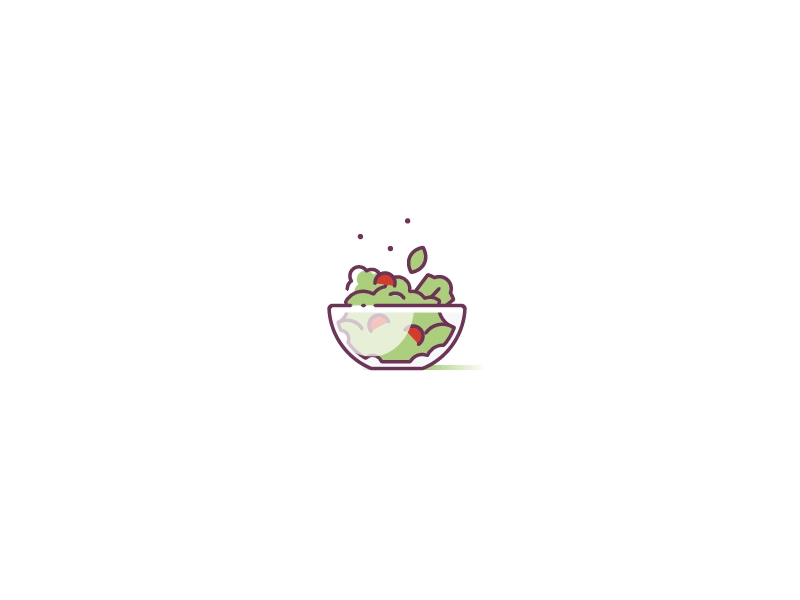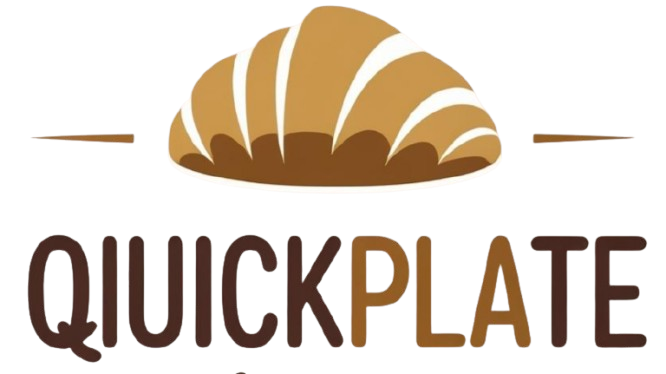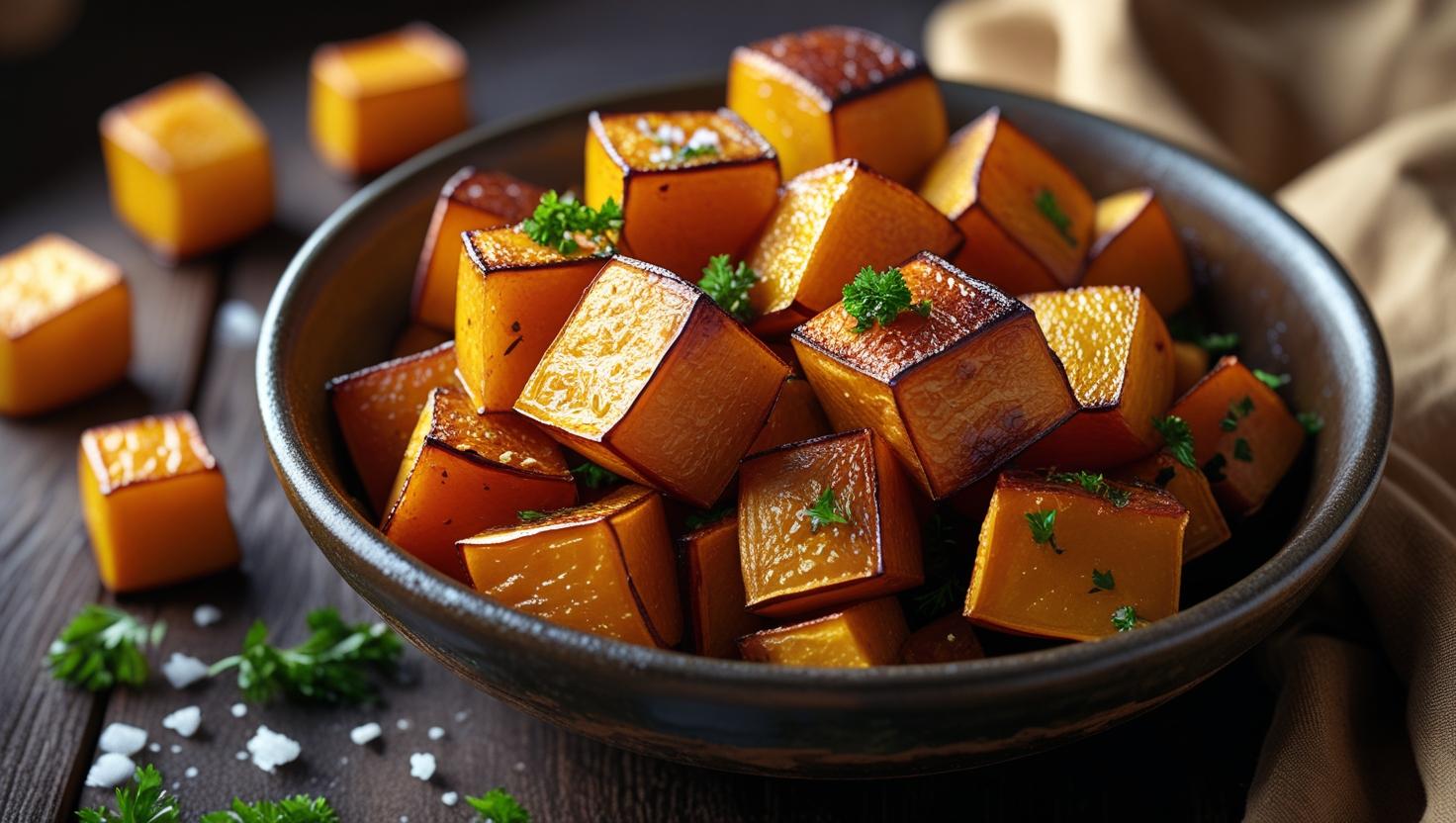Fall is in the air, and with it comes a bounty of beautiful, earthy vegetables. But let's be honest, one gourd reigns supreme when the leaves start to turn: the butternut squash. If you've ever felt intimidated by its tough exterior or been underwhelmed by mushy results, you've come to the right place. Welcome to your ultimate guide to mastering roasted butternut squash. This isn't just a recipe; it's a deep dive into creating a side dish so delicious, so deeply caramelized, and so incredibly versatile, it might just steal the show from the main course.[1]
We're going to break down everything you need to know, from picking the perfect specimen at the grocery store to the safest, easiest way to peel and chop it.[2] We'll cover the classic, foolproof method for achieving that golden-brown, buttery perfection, and then we'll explore a world of flavor combinations, from sweet and spicy to savory and herbaceous.[1][3] Think of this as your go-to manual for all things roasted butternut squash. Whether you're a seasoned home cook looking to up your game or a complete beginner who's just discovered the magic of this autumn jewel, we’ve got you covered. Get ready to transform this humble squash into a culinary masterpiece that is not only packed with flavor but also brimming with health benefits. Let's get roasting!
Why Roasted Butternut Squash Deserves a Spot on Your Table
In the vast world of side dishes, roasted butternut squash stands out as a true champion of flavor, simplicity, and nutrition. It's more than just a Thanksgiving staple; it's a year-round powerhouse that can elevate any meal. When roasted, the squash undergoes a magical transformation. Its natural sugars caramelize, creating a dish that's beautifully sweet, nutty, and irresistibly delicious.[1][4] The texture becomes melt-in-your-mouth tender on the inside with delightfully crispy, golden-brown edges.[1]
What's more, this delectable dish is incredibly easy to prepare. With just a few basic ingredients—olive oil, salt, and pepper—you can create a simple yet elegant side.[1] But the beauty of roasted butternut squash lies in its versatility. It serves as a perfect canvas for a wide array of seasonings, from the warming spices of cinnamon and nutmeg to savory herbs like rosemary, sage, and thyme.[3][5][6] Beyond its amazing taste, butternut squash is a nutritional giant, packed with vitamins, minerals, and antioxidants that support overall health.[7][8] It’s a low-calorie, high-fiber option that can aid in weight management and promote digestive health.[8][9]
A Buyer's Guide: Choosing the Perfect Butternut Squash
Your journey to perfect roasted butternut squash begins in the produce aisle. Selecting a high-quality squash is the first and most crucial step. Here’s what to look for to ensure you bring home the best of the bunch:
-
Solid, Uniform Color: A ripe butternut squash should have a solid, dark beige color.[10] Avoid squash with green patches or spots, as this indicates it's underripe. A consistent color signals that the squash has matured properly and will have a sweeter, more developed flavor.
-
A Hard, Firm Shell: Gently press on the squash's exterior. It should feel hard and firm all over.[10] If you find any soft spots, bruises, or cuts, it's best to leave it behind. These blemishes can be signs of decay and will affect the quality and longevity of the squash.
-
Feels Heavy for Its Size: Pick up a few different squashes of similar size. The one that feels the heaviest is likely the best choice.[10] A heavy squash indicates a high water content and dense, flavorful flesh, which is exactly what you want for a delicious roasted butternut squash.
-
Check the Stem: Look for a squash with a dry, intact stem. A mushy or missing stem could mean the squash is old or has started to rot from the top down.
The Essential Toolkit for Roasting Perfection
You don't need a kitchen full of fancy gadgets to make incredible roasted butternut squash. In fact, you probably already have everything you need. Here's the essential equipment to get the job done right:
-
A Sharp, Sturdy Chef's Knife: This is your most important tool. A good, sharp knife is essential for safely cutting through the tough skin and dense flesh of the squash.[2][11]
-
A Vegetable Peeler: A sharp Y-peeler is highly recommended as it provides a better grip and makes peeling much easier and safer.[10][12]
-
A Large Spoon: You'll need this to scoop out the seeds and stringy pulp from the squash's cavity.
-
A Large Baking Sheet: Use a large, rimmed baking sheet to ensure the squash cubes have enough space to roast in a single layer. Overcrowding the pan will cause the squash to steam instead of roast, preventing that beautiful caramelization.[1][13] Lining the pan with parchment paper or foil will make cleanup a breeze.[11][13]
-
A Large Mixing Bowl: While you can toss the squash directly on the baking sheet, using a large bowl ensures every single cube is evenly coated with oil and seasonings for maximum flavor and browning.[14]
Mastering the Cut: How to Safely Peel and Cube Butternut Squash
Let's face it, the most intimidating part of making roasted butternut squash is the prep work. That tough skin and awkward shape can be daunting, but with the right technique, it's a piece of cake.
A Quick Tip for Easier Peeling
If you find the skin particularly tough, you can soften it slightly before peeling. Simply pierce the squash all over with a fork, then microwave it for 2 to 4 minutes.[10][12][15] This little trick makes the skin much easier to remove.
Step-by-Step Guide to Prepping Your Squash
-
Trim the Ends: Place the squash on a large, stable cutting board. Carefully slice off about a quarter-inch from both the stem and the bottom end. This creates flat, stable surfaces to work with.[2][16]
-
Peel the Skin: Stand the squash on its wider, flat bottom. Using a sharp vegetable peeler (a Y-peeler works best), peel the skin off in long, downward strokes. Continue until all the light-colored flesh beneath the skin is removed.[16][17]
-
Separate and Halve: Cut the squash crosswise where the thinner neck meets the round, bulbous base. Now you have two manageable pieces. Stand each piece on its flat end and slice it in half lengthwise.[10][16]
-
Scoop the Seeds: Use a sturdy spoon to scrape out the seeds and stringy bits from the hollowed-out base sections. You can discard these or save the seeds to roast later for a crunchy snack![2][18]
-
Cube It Up: Lay the squash halves flat side down on the cutting board for stability. Cut them into evenly sized slices, then cut the slices into sticks, and finally, dice the sticks into one-inch cubes.[1][2] Uniform cubes will ensure your roasted butternut squash cooks evenly.[1]
The Classic Roasted Butternut Squash Recipe: A Foolproof Method
This is the foundational recipe for perfect roasted butternut squash every time. It’s simple, highlighting the squash's natural sweetness and creating a wonderfully caramelized texture.
H3: Ingredients for Classic Roasted Butternut Squash
-
1 medium butternut squash (about 3 pounds), peeled, seeded, and cut into 1-inch cubes[3]
-
2 tablespoons extra-virgin olive oil[5]
-
1 teaspoon kosher salt[19]
-
½ teaspoon freshly ground black pepper[20]
-
Optional: Chopped fresh parsley for garnish[1]
Step-by-Step Roasting Instructions
-
Preheat Your Oven: Set your oven to 400°F (200°C). A hot oven is key to getting those crispy, caramelized edges.[11][13] Line a large baking sheet with parchment paper for easy cleanup.[1]
-
Coat the Squash: In a large bowl, toss the butternut squash cubes with the olive oil, salt, and pepper. Make sure every piece is evenly coated.[13]
-
Spread in a Single Layer: Arrange the seasoned squash on the prepared baking sheet in a single layer. Don't overcrowd the pan! Giving the cubes space allows them to roast rather than steam, which is crucial for browning.[1][13]
-
Roast to Perfection: Bake for 25-35 minutes, tossing the squash halfway through the cooking time.[1][13] The roasted butternut squash is done when it's tender enough to be easily pierced with a fork and beautifully golden brown and caramelized around the edges.[1][18]
-
Serve and Enjoy: Garnish with fresh parsley if desired and serve immediately.[1]
Beyond the Basics: Elevating Your Roasted Butternut Squash
The classic recipe is fantastic on its own, but roasted butternut squash is also the perfect vehicle for a variety of exciting flavors. Here are some ideas to take your squash to the next level.
Sweet & Spicy Roasted Butternut Squash Variations
-
Maple Cinnamon: Toss the squash with olive oil, two tablespoons of pure maple syrup, and a half-teaspoon of cinnamon before roasting for a classic fall flavor. A pinch of cayenne can add a gentle warmth.[5][15]
-
Brown Sugar & Cayenne: For a truly caramelized treat, toss the squash with melted butter, brown sugar, salt, pepper, and a dash of cayenne pepper. This combination is sweet, savory, and slightly spicy.[4]
Savory & Herby Roasted Butternut Squash Ideas
-
Garlic and Herb: Toss the squash with olive oil, minced garlic, and a tablespoon of chopped fresh herbs like rosemary, thyme, or sage.[21] This creates a fragrant and savory side dish perfect for any occasion.
-
Parmesan & Garlic: After tossing with olive oil, salt, and pepper, add a generous amount of grated Parmesan cheese and garlic powder. The cheese will become nutty and crispy in the oven.
H4: Getting Creative with Spices and Herbs
Don't be afraid to experiment with your spice rack! The natural sweetness of roasted butternut squash pairs well with a wide range of flavors.[6][22]
-
Warm Spices: Nutmeg, allspice, and ground ginger are all wonderful additions.
-
Savory Blends: Try Italian seasoning, herbes de Provence, or even a sprinkle of curry powder for an unexpected twist.[3][23]
Nutritional Powerhouse: The Health Benefits of Butternut Squash
Beyond its comforting flavor, butternut squash is a nutritional superstar. Adding roasted butternut squash to your diet is a delicious way to boost your intake of essential vitamins and minerals.
It is an excellent source of Vitamin A, primarily in the form of beta-carotene, which is a powerful antioxidant responsible for the squash's vibrant orange color.[7][9] Vitamin A is crucial for maintaining healthy vision, immune function, and skin health.[9][24] The squash is also packed with Vitamin C, another potent antioxidant that helps protect your cells from damage and supports collagen production.[7][8]
Furthermore, butternut squash is a great source of dietary fiber, which aids in digestion, helps maintain stable blood sugar levels, and contributes to a feeling of fullness, which can be beneficial for weight management.[8][25] It also provides important minerals like potassium and magnesium, which play roles in regulating blood pressure and supporting bone health.[7][24]
Pro Tips and Tricks for Restaurant-Worthy Roasted Butternut Squash
Want to know the secrets to making your roasted butternut squash taste like it came from a high-end restaurant? Follow these pro tips.
The Secret to Perfect Caramelization
The key to deep, rich caramelization is threefold: high heat, enough space, and a touch of sugar.
-
Don't skimp on the heat. A 400°F (200°C) oven is ideal.[13] It allows the exterior to brown and crisp up while the inside becomes tender.
-
Give it space. As mentioned before, spreading the squash in a single layer on the baking sheet is non-negotiable.[1] This allows hot air to circulate around each cube, promoting even roasting.
-
A little sugar helps. While butternut squash has natural sugars, adding a small amount of maple syrup or brown sugar will enhance the caramelization process, creating a beautiful glaze.[4][5]
To Peel or Not to Peel? An Expert's Take
Technically, butternut squash skin is edible.[26][27] When roasted, it becomes softer, though it can still be a bit chewy. For the best texture, especially when making cubed roasted butternut squash, it's generally recommended to peel it.[28][29] However, if you're roasting larger pieces, like halves or wedges, leaving the skin on can be a great time-saver and adds a rustic look.[27] If you do eat the skin, make sure to wash the squash thoroughly.
Storing and Reheating: Enjoying Your Roasted Butternut Squash Later
One of the great things about roasted butternut squash is that it makes for fantastic leftovers. Here’s how to store and reheat it properly.
-
Storing: Allow the cooked squash to cool completely before transferring it to an airtight container. It can be stored in the refrigerator for up to 4-5 days.[13][14]
-
Freezing: For longer storage, you can freeze roasted butternut squash. Spread the cooled cubes in a single layer on a baking sheet and freeze until firm. Then, transfer the frozen cubes to a freezer-safe bag or container. They can be stored for up to three months.[13][19]
-
Reheating: To maintain the best texture, reheat the squash in an oven or air fryer at 350-400°F (175-200°C) for 5-10 minutes, or until warmed through and slightly crisped.[13][30] While you can use a microwave, the squash will be softer and less crispy.[14]
Frequently Asked Questions (FAQs) about Roasted Butternut Squash
1. How do I know when my roasted butternut squash is done?
Your squash is perfectly cooked when it is fork-tender (a fork slides in easily) and has golden-brown, caramelized edges. This usually takes between 25 and 35 minutes at 400°F (200°C).[1][13]
2. Why isn't my butternut squash getting crispy?
The most common culprit is overcrowding the pan. When the squash is too close together, it steams instead of roasts. Use a large baking sheet and make sure the cubes are in a single, even layer with space between them. A sufficiently hot oven is also critical.[1][13]
3. Can I use pre-cut butternut squash from the store?
Absolutely! Using pre-cut squash is a fantastic time-saver. Just be aware that the cubes might be larger or less uniform, so you may need to adjust the roasting time slightly.
4. What can I do with leftover roasted butternut squash?
Leftovers are incredibly versatile! You can add them to salads, grain bowls, tacos, or pasta dishes.[1] They are also delicious blended into a creamy soup, mashed as a side dish, or even used in hummus.[1][31]
5. Can you eat butternut squash seeds?
Yes! Don't throw them away. Clean the seeds, toss them with a little olive oil and salt, and roast them at 350°F (180°C) for 10-15 minutes until golden and crispy. They make a wonderful, nutritious snack or salad topper.[18]
6. What main dishes pair well with roasted butternut squash?
Its sweet and savory profile makes it a great partner for many proteins. It pairs beautifully with roasted chicken, pork tenderloin, turkey, salmon, and sausage.[19][31] It's also a wonderful component in vegetarian dishes like risotto or hearty salads.[6][31]
Conclusion
There you have it—everything you need to confidently create the most delicious roasted butternut squash you've ever tasted. From selecting the perfect squash to mastering the cut and exploring a world of flavors, you are now equipped to make this humble vegetable shine. Roasting unlocks a depth of sweet, nutty, and caramelized flavor that is simply irresistible, transforming it into a side dish worthy of any occasion. Whether you stick to the classic recipe or venture into sweet, spicy, or savory variations, you're creating a dish that is not only packed with incredible flavor and texture but also brimming with nutritional benefits. So, preheat your oven, grab your baking sheet, and get ready to fall in love with the simple, elegant, and endlessly versatile magic of roasted butternut squash.


